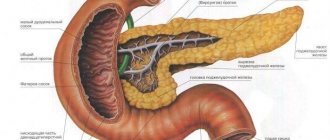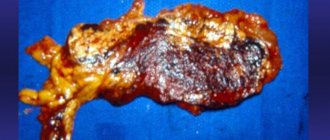White turmeric
Turmeric cedoaria or white, is one of the varieties of the described aromatic plant.
In cooking and medicine, powdered roots of the plant are used, which have a bitter-burning taste and an original smell. In traditional Indian medicine, white turmeric is used to treat cough, pharyngitis, diabetes, anemia and other diseases. The spice produced from this plant is used as an analgesic and choleretic agent.
https://www.youtube.com/watch?v=subscribe_widget
White turmeric oil is used in perfumery.
What is turmeric and what does it look like?
The plant belongs to the Zingiberaceae family, but turmeric and ginger are not the same thing. From them, various seasonings are obtained, differing in taste, aroma, composition, and properties.
Southeast India is considered the plant's homeland, although turmeric is also grown in other countries. This is a perennial plant with long green leaves and large pink flowers. It reaches a height of 1 meter.
Because of its yellow color, the spice is called Indian saffron. The composition includes vitamins and microelements:
- ascorbic acid;
- vitamins A and E;
- B vitamins;
- iron;
- zinc;
- calcium.
Curcumin gives the seasoning its color - it is a biologically active substance that is responsible for almost all the medicinal properties of the plant. Nutritional value of 100 grams of turmeric:
- proteins - 9.6 g;
- fats - 3.2 g;
- carbohydrates - 64 g;
- calorie content 312 kcal.
The spice, which is sold as a yellow powder packaged in bags, is made from the rhizome of the plant. The roots are first dried for a long time, then ground to a powdery state.
Also in cooking, folk medicine and cosmetology, an alcoholic tincture of the plant and essential oil are used. The tincture is obtained by soaking the rhizomes in alcohol. Essential oil is obtained from the roots by steam distillation.
In nature, there are about 40 varieties of plants. Only a few of them, which have beneficial properties, are used to make seasonings. Varieties:
- White. It has a sharp, bitter taste and a pronounced odor. Oil from the roots is used in perfumery.
- Yellow. Traditionally used to make food seasoning. It has a mild taste and delicate aroma.
- Red. It is used not only as a spice, but also as a natural dye.
- Indian. A classic spice is prepared from it. In folk medicine it is used as a natural antibiotic and antiparasitic agent.
- Javanese long. It is distinguished by tubers up to 30 cm long. They are used for the preparation of medicines and have medicinal properties.
For any spice variety, only rhizomes are used.
Benefits for men
The beneficial substances contained in turmeric, especially curcumin, make this spice an indispensable remedy for the non-drug treatment of gastritis, improving the condition of the stomach and intestines. Turmeric cleanses the intestines well, promoting better peristalsis and motility. Thanks to this property, the removal of toxins and waste is accelerated and stool is normalized.
The main properties due to which turmeric is used for gastritis of the stomach are anti-inflammatory and antibacterial. In addition, when consuming the spicy root, the following occurs:
- normalization of acidity (therefore, turmeric is recommended for gastritis with high acidity, which often results in peptic ulcer);
- healing of ulcers;
- restoration of intestinal microflora.
Due to damage to the mucosa, an ulcer develops. When the stomach and duodenum are affected, the ulcer not only significantly affects the comfort of life (pain, dietary restrictions), but is also fraught with complications. The most serious of them is the appearance of malignant neoplasms at the site of ulceration.
Turmeric for stomach and duodenal ulcers not only promotes mucosal regeneration, but also prevents tissue degeneration and uncontrolled cell growth. The spice will also help with heartburn, which is one of the symptoms of these diseases, including gastritis. But before you start treatment, you need to consult your doctor to see if turmeric can be used for gastritis and ulcers.
Turmeric has a positive effect on the pancreas: this spice promotes the digestion of fatty, heavy foods and thereby significantly reduces the load on the gland. The anti-inflammatory property of the root also has a beneficial effect. Turmeric is useful for the pancreas as a preventive measure, but you need to be careful when using the spice. With pancreatitis (inflammation of the pancreas), turmeric reduces pain and helps restore the functions of this organ.
The pulp of the rhizome contains substances due to which turmeric is used against parasites, including protozoa (dysenteric amoebas and giardia). Yellow ginger helps eliminate pinworms, roundworms, nematodes, roundworms and liver worms from the body. If the body is affected by tapeworms, eat a spoonful of honey flavored with spice in the morning on an empty stomach and in the evening after dinner. You need to take the product for 3 weeks. If you are allergic to honey, it is replaced with herbal choleretic agents.
Turmeric for worms is recommended even for children: you need to drink golden milk (a mixture with a paste of spice powder) for three weeks in a row, a glass before bedtime, take a break and repeat the course of treatment.
To avoid complications, you should definitely see a doctor who will advise you on how to properly use turmeric not only in the treatment of gastritis, but also other diseases, and recommend what form to take it in.
1) Antioxidant, 2) Anti-inflammatory, 3) Antimicrobial, 4) Antidiabetic, 5) Anticancer, 6) Protection against nervous system diseases such as Alzheimer's disease.
Now we will take a closer look at some of the benefits of using turmeric.
Arthritis.
Arthritis is a disease of the joints that usually appears with age.
Several studies show that taking curcumin products (specially formulated to increase bioavailability) for 2-3 months reduces pain and improves joint function. In addition, their use allows you to minimize painkilling pharmacological drugs.
Two studies in patients with knee arthritis found that curcumin was as effective as ibuprofen, a drug that can cause stomach upset and intestinal harm.
Combining turmeric with other anti-inflammatory herbs, such as boswellia and ginger, also helps improve symptoms.
Curcumin will also help with rheumatoid arthritis, an autoimmune disease.
One study found that curcumin was more effective than diclofenac in reducing pain in patients with rheumatoid arthritis.
1) Reduces blood cholesterol and triglycerides,
2) Interferes with the oxidation of LDL cholesterol (the chemical reaction that makes this cholesterol more harmful to the arteries),
3) Inhibits platelets, thereby reducing the risk of clots forming in blood vessels.
One study found that taking 4 grams of curcumin per day for several days before and after coronary artery bypass surgery reduced the risk of in-hospital heart attack.
Curcuminoids are poorly absorbed from the gastrointestinal tract, making them potentially useful against intestinal inflammation and colon cancer.
Inflammatory bowel diseases include ulcerative colitis (an inflammatory disease of the colon) and Crohn's disease (which primarily affects the end of the small intestine and the beginning of the large intestine).
When curcumin was added to people with ulcerative colitis, their time to relapse increased.
Turmeric reduces post-meal upset stomach and improves symptoms in patients with irritable bowel syndrome, characterized by abdominal pain, gas, bloating, diarrhea and constipation.
Turmeric gels and mouthwashes have been recommended for maintaining oral health and for diseases such as gingivitis (inflammation of the gums).
Mouthwashes containing turmeric were as effective as the drug chlorhexidine in improving gingivitis and reducing bacteria levels in the mouth.
Diabetes.
Curcumin works in several ways to reduce blood glucose (sugar) levels.
One study found that taking curcumin for three months reduced blood glucose levels in overweight and obese type 2 diabetics.
In addition, curcumin supplements taken for nine months by individuals at high risk of developing type 2 diabetes reduce this risk.
Infections.
Turmeric is traditionally used to fight skin infections and heal wounds.
Laboratory studies have revealed a range of antimicrobial effects
It turned out that curcumin inhibits
1) a number of bacteria including:
- Staphylococcus aureus,
- epidermal staphylococcus,
- coli,
- cholera vibrio.
2) viruses:
- flu,
- parainfluenza,
- herpes simplex virus 1 and 2,
- respiratory syncytial virus,
- human papilloma virus,
- hepatitis B and C viruses)
3) mushrooms:
- Cryptococcus heoformans,
- Candida Albicans
- dermatophytes,
- a group of fungi that can infect the skin.
Psoriasis.
One study showed the effectiveness of oral turmeric extract in relieving symptoms of moderate to severe psoriasis in affected individuals.
Another study found that 1% turmeric gel was effective faster than the regular drug (calcipotriol).
In laboratory studies, curcumin was found to inhibit the formation of beta amyloid.
Experiments have also shown that curcumin may help protect against Parkinson's disease and inhibit the growth of brain tumors.
This may be why in India, where curcumin is more commonly used, Alzheimer's disease is less common than in America (4% in India and 16% in Pennsylvania in the US).
The anticancer effect of turmeric has been studied for a long time.
1) prevents the formation of tumors, their growth, invasion and metastasis. 2) inhibits the creation of new blood vessels that feed the tumor, 3) stimulates cancer cells to die.
2.In addition, the chemicals in turmeric enhance the function of the immune system.
One of the functions of the immune system, in addition to fighting infectious organisms, is the destruction of cancer cells.
3. Laboratory experiments have shown that taking curcumin together with certain chemotherapy drugs and radiation therapy improves cancer treatment outcomes.
Additionally, curcumin may counteract cancer cell resistance to chemotherapy.
According to the results of 12 clinical studies, the best results were obtained in people with colon and pancreatic cancer.
1) Curcumin improves quality of life and reduces inflammation in people with various types of cancer.
2) In 160 people with certain types of cancer, relatively low doses of curcumin reduced the side effects due to standard chemotherapy or radiation therapy.
3) Curcumin supplements may help stabilize disease in people with colon cancer.
4) In smokers (who are at risk for colon cancer), 4 grams per day of curcumin significantly reduces precancerous lesions in the colon and rectum.
5) In a study on women with breast cancer, it was found that 6 grams per day of curcumin in combination with the chemotherapy drug docetaxel had promising results.
However, some scientists believe that there are not enough clinical studies yet to recommend curcumin for the treatment of cancer.
They believe that turmeric treatment may be beneficial for some patients, but not for all patients.
Additionally, the dose of turmeric that is ideal for all patients is unknown.
Researchers suspect that turmeric's powerful anti-inflammatory and antioxidant properties are key to its ability to protect against many diseases.
Anti-inflammatory medications can reduce the inflammation that occurs when the immune system is doing its job.
Antioxidants fight oxidation, causing a chemical reaction that generates tissue-damaging molecules called free radicals.
Oxidation promotes inflammation and vice versa.
Oxidation and inflammation can accelerate aging and underlie most chronic human diseases, including inflammatory bowel disease, cardiovascular disease, diabetes, cancer, arthritis and Alzheimer's disease.
I hope that you learned new, interesting and useful information about turmeric for your health.
- To cleanse the blood, you need to mix a teaspoon of turmeric and 100 ml of water. Boil water and add 100 ml of milk and a teaspoon of almond oil to it
- The finished product should be divided into two parts and taken morning and evening for 10 days
- To treat eye inflammation, boil 500 ml of water and add 20 g of turmeric. After the composition has cooled, you need to dip a cotton pad into it and rinse your eyes with it.
Beneficial features
American and Indian scientists studied the medicinal properties of turmeric; they came to the conclusion that the spice can help treat many diseases if you know how to use it correctly and what symptoms it can help with.
This spice is a natural anti-inflammatory agent
Properties for gastritis
Having decided to be treated with the seasoning in question, you need to know exactly its dosage and not exceed it. For medicinal purposes, turmeric is taken at a dose of 100 mg per 1 kg of weight, it turns out that if a person weighs approximately 70 kg, then his recommended dose is 7 grams.
When problems with the gastrointestinal tract occur, you should know the following properties of this spice:
- It reduces the acidity of the stomach, while the production of gastric juice decreases, which is especially important during gastritis, this makes it possible for damaged walls to heal faster.
- Turmeric suppresses the spread of inflammatory processes in the body, this does not bypass the pancreas and gastrointestinal tract.
- The seasoning is known as a good natural antiseptic, which, once inside the body, promotes the speedy healing of wounds.
- During malfunctions of the stomach, food is poorly digested in it, stagnates and this leads to its fermentation, which causes a dyspeptic condition accompanied by pain and vomiting. Turmeric relieves pain and speeds up the process of processing food.
- When stagnation occurs in the body, turmeric, thanks to its choleretic agents, eliminates this phenomenon and at the same time improves the microflora of the stomach.
- It improves appetite and promotes digestion, so it is recommended to include it in your diet for gastritis.
Turmeric speeds up the healing process of ulcers and wounds
Other properties
Turmeric helps not only with gastritis, but has been successfully used to treat other diseases.
It would be useful to know that this spice can be used to:
- Calm the cough and reduce the urge to cough at the initial stage.
- Reduce blood sugar levels, this property is especially useful for diabetics.
- Cleanse the body of harmful components, as turmeric is an excellent antioxidant.
- Together with a complex of medications, it helps fight cancer.
- To help endure difficult rehabilitation periods after complex operations or serious illnesses.
- Extend youth to the body, as the spice destroys free radicals, this happens thanks to the polyphenols it contains.
- Turmeric is an effective natural antibiotic, which, thanks to its rich composition, easily eliminates viruses from the body and prevents the proliferation of harmful bacteria that can cause inflammatory processes. Unlike synthetic antibiotics offered in pharmacies, the seasoning does not affect the intestinal microflora, but, on the contrary, normalizes it, which leads to a healthier body as a whole.
- Boost immunity during periods of mass diseases. And in case of throat diseases, it helps to quickly remove microbes from the body; in such cases, it is better to combine it with the simultaneous use of ginger and cinnamon.
- To help women with the onset of menopause, slowing down the aging process of the body and strengthening the general condition of the body.
- Accelerate the regenerative properties of the skin and the body, while promoting the healing of injuries and wounds.
- Participate in cleaning the walls of blood vessels, which improves lipid metabolism and removes “bad” cholesterol from the body. To lower its level, it is enough to drink a glass of kefir with turmeric mixed in it every day before going to bed. This healthy habit will help you lose weight.
- Eliminates itching.
- Help reduce pain in the stomach, although turmeric does not have a very pronounced analgesic effect.
- Helps remove the body from an antidepressive state, also having a slight sedative effect.
- Retain the growth of blood vessels in various tumors and dampen the negative effects of chemotherapy.
- Eliminate excess bile accumulations, as it has a choleretic effect.
Turmeric during pregnancy. Turmeric for pregnant women
Not long ago, the Maryland Medical Center published a study that found no negative reactions when consuming turmeric during pregnancy.
That is why turmeric (of course, within reasonable limits) can be used as food for women expecting the birth of a baby. But, pregnant women should not engage in treatment based on this spice.
The use of turmeric in pregnant women is not contraindicated. But you should follow some rules for its use:
- reduce the daily dose to a pinch;
- add to food, but do not consume the aqueous solution or drink it with milk;
- External use is acceptable.
The spice improves immunity, which is important for pregnant women. It also regulates intestinal function, removes toxins from the body, and this reduces the severity of toxicosis. Nursing mothers should avoid using the seasoning. Through breast milk it can cause allergies in the baby.
When is it used?
The spice can be used as an aid for skin cancer.
Proponents of alternative treatment recommend using turmeric as part of a complex treatment for the following pathological conditions:
- Melanomas, in order to prevent their further development. Plus, turmeric is used against cancer, as it actively destroys already formed cancer cells.
- Cuts and burns - for disinfection and prevention of wound suppuration.
- Alzheimer's disease, in which turmeric removes protein plaque deposits in the brain.
- Multiple sclerosis.
- Large body weight. Due to the ability of turmeric to normalize metabolism, weight loss occurs.
- Neurotic disorders.
- Arthritis and rheumatoid arthritis.
- Inflammatory diseases of the skin.
- Stomach diseases. The plant is excellent at combating increased gas production and bloating, which often accompany stomach ailments.
Turmeric should be used for a particular disease only after consultation with a doctor, who will determine the advisability of such therapy and rule out the presence of contraindications to the plant.
Return to contents
Use in cooking
The use of turmeric for skin care is an effective remedy, as the spice improves blood circulation in the skin, relieves irritation and acne, removes fine wrinkles, narrows pores and eliminates oily shine.
The spice affects hair in the following way:
- adds shine and silkiness;
- eliminates dandruff;
- eliminates itching.
- You need to take milk powder and turmeric powder. Both ingredients are diluted in warm water. The mask is applied to the skin for 15-20 minutes. As a result, the skin is saturated with useful minerals, becomes clean and moisturized.
- Using blue clay. Add ¼ spoon of turmeric to the powder and mix by adding water. This mask is used to eliminate facial wrinkles. The procedure should be repeated 3-4 times a week.
- Based on black clay. Add water and 1 tsp to the composition. turmeric. This mask is kept for 20-25 minutes and repeated every other day. As a result, the amount of acne and inflammation decreases.
Despite the benefits, if the dosage is incorrect, turmeric can cause harm - burns on the skin! - For dandruff. Mix egg yolk and onion. Add turmeric powder and red chilli powder. The mixture is applied to the head and left for 35-45 minutes, then washed off.
- To strengthen hair. Mix turmeric powder, honey and milk. The mixture is applied to the hair roots and left for 15 minutes.
Nutritionists recommend including this product in your diet, as the seasoning can normalize the metabolic process. Thanks to curcumin polyphenol, the spice effectively prevents the growth of subcutaneous fat.
It is this factor that makes the seasoning useful for weight loss. Turmeric not only removes fat deposits, but also affects blood vessels. Therefore, the growth of adipose tissue slows down significantly.
If turmeric does not cause allergies, it can be used daily to make drinks and medicinal teas. Along with proper nutrition, a healthy decoction should be used regularly. It is recommended to drink tea after meals and before bed.
Turmeric is widely used in both home and professional cooking. The spice is ideal for rice dishes. That is why the seasoning is used in the traditional cuisine of Asia, Azerbaijan and India.
In oriental cuisine, this seasoning is used for:
- meat;
- fish;
- soups and broths;
- eggs;
- vegetable salads;
- sweets.
Chefs note the compatibility of the seasoning with their legume dishes. In some countries it is actively added to desserts. The spice not only gives the products a special golden color, but also fills them with freshness and piquant taste.
Experts recommend adding spices to dishes with caution, as a slight deviation from the norm can worsen the taste of the finished food. Ideally, the spice is added at the tip of the knife. Contraindications
The use of turmeric is completely contraindicated in the following cases:
- in the presence of cholelithiasis;
- pancreatitis;
- advanced stage of hepatitis;
- during the active stage of gastritis.
The spice can increase the tone of the uterus, so you should avoid this product during pregnancy. Also, this spice can cause allergies in a child, so it is not used during lactation. In any case, it should be remembered that the daily dose is no more than 3 g of the product.
Like any medicine, turmeric has a number of unwanted side effects that limit its use in some patients. Turmeric is not recommended for people suffering from the following diseases:
- Gallstone disease (calculous cholecystitis). The spice has a strong choleretic effect and can cause a stone to leave the gallbladder, causing it to block the bile ducts. This is a serious complication that requires surgical intervention.
- Although turmeric is beneficial for persistent diarrhea, excessive consumption of this spice can lead to the opposite result.
- Low blood pressure (hypotension). Turmeric additionally lowers blood pressure, which can be complicated by fainting, and in older patients, dangerous complications such as stroke.
- Diabetic patients should avoid excessive consumption of turmeric as it may lead to hypoglycemic coma.
- Turmeric should not be used with anticoagulants, as it further thins the blood, which can result in bleeding from the mucous membranes and internal organs.
Treatment with turmeric is contraindicated for urolithiasis. If you have a stomach ulcer or gastritis, it is better not to abuse this spice.
Despite the large number of beneficial properties, turmeric is not an absolutely safe product. There are several contraindications to its use:
- individual intolerance;
- tendency to bleed;
- gastritis and stomach ulcers in the acute stage;
- severe diabetes mellitus;
- acute hepatitis;
- hypotension.
The spice does not have any harmful effects on the body. But with these conditions, the risk of side effects increases.
An overdose of spice causes abdominal pain, nausea, and a sharp drop in blood pressure. Urticaria-type rashes are possible. Overdosing is rare because it requires eating the whole packet of seasoning at once.
The main use of turmeric is cooking. The seasoning is also widely used in folk medicine, and curcumin is officially included in some medications.
Turmeric root juice is a dietary supplement. It is obtained by cold pressing. To obtain a liter of juice, 12 kg of rhizomes are required.
The juice is taken a teaspoon orally to prevent cancer, heart attacks, and strokes. The juice also has the property of healing abrasions and cuts.
You can buy turmeric powder in capsules in pharmacies. This is also a dietary supplement that is taken for preventive purposes. The drug is indicated for cardiovascular diseases and chronic bronchitis.
The beneficial properties of the spice are best demonstrated in combination with ground black pepper. Curcumin is poorly absorbed in the intestines, and piperine, which is found in black pepper, improves the absorption process.
In cooking
Ground turmeric is used to add flavor and aroma to various dishes. The seasoning is especially popular in Asian countries. Turmeric goes best with meat dishes such as pork, chicken, and beef.
Add spice to rice dishes. One of the popular Indian dishes is chicken with rice and curry, which includes turmeric. The spice gives vegetable salads and stews a spicy aroma.
Various sauces are prepared with the addition of spices. Black pepper helps highlight the spicy aroma of the seasoning. It adds heat to sauces and marinades, and turmeric gives them a pleasant yellow color.
The optimal ratio is three parts turmeric, one part black pepper. In this combination, the taste qualities of the spices are maximized, and the beneficial properties are also significantly enhanced.
Add the spice 5-10 minutes before the end of cooking. If you add it at the beginning, almost all the beneficial substances are destroyed under the influence of high temperature, and the healing properties are lost.
Chopped fresh root of the plant is added to sauces and rubbed onto meat before baking. A healthy drink is prepared with fresh root. Grind the roots of turmeric and ginger and add water. Add lemon juice and mint.
There are no spices identical to turmeric. It cannot be completely replaced by anything. Turmeric and saffron are similar in color. Therefore, saffron can be used to give a yellow color to dishes. You can also use curry because this spice contains turmeric.
Recipes for gastritis with turmeric
Medicine has studied the therapeutic properties of the spice to help cope with gastritis. We invite you to familiarize yourself with the most effective recipes.
However, be careful, since the dosage of spice in each diagnosis is selected individually. In some cases, self-medication is dangerous!
Decoction with coal
A mixture of turmeric and crushed activated carbon is used in the treatment of the stomach and bile secretion organs.
- turmeric - 15 g;
- coal - 3 tablets;
- milk - 60 g.
- Mix the ingredients until smooth and bring to a boil over low heat.
- Drink 1 tablespoon of the decoction 3 times a day after meals.
With honey
Components for home remedies for gastritis are available to everyone. Patients with gastrointestinal pathologies combine doctor's prescriptions and folk recipes, for example, turmeric with honey and charcoal.
To make the product, take:
- turmeric - 1 tsp;
- coal - 1 tablet;
- honey - 1 tsp.
Scheme of preparation and administration:
- Dissolve the powder and tableted charcoal in honey.
- Take the resulting mass at night for 10 days, 1 tbsp. l.
With butter
A bright, beautiful drink, made according to oriental recipes, consists of simple ingredients:
- turmeric oil extract - 3 drops;
- water - 500 ml.
- Dilute the yellow extract in a container of water.
- Drink 30 minutes before meals several times a day.
Turmeric curry
Curry is a turmeric based mixture. This spice usually makes up 20%-30% of the entire curry mixture. In addition to turmeric, it can contain from 7 to 20 components.
Another essential component of such a spicy mixture is powdered curry leaves. In those countries where this spice does not grow, it is replaced with Greek fenugreek. Also among the curry ingredients you can find coriander and red pepper.
Curry is used to flavor and add an original flavor to dishes made from rice, meat, poultry and vegetables.
Recipes for gastritis with turmeric
There are several effective recipes using turmeric that help fight gastritis. We remind you that dosages may vary; to better adapt the recipe to your body, consult your doctor.
- A decoction based on turmeric and activated carbon. Mix turmeric powder (10–15 grams) with three crushed tablets of activated carbon and pour the mixture with 60 ml of homemade milk. Stir thoroughly to avoid lumps and place over medium heat until boiling. The resulting decoction should be taken 1 tablespoon after meals 3-4 times a day. Drink the decoction only at room temperature. The course of treatment is 10–12 days, with a break of at least 7 days.
- Turmeric infusion with honey. Mix one teaspoon of honey with a crushed tablet of activated carbon and 5 g of turmeric until smooth. Use the resulting mixture at night for 10 days.
- Drink for gastritis with turmeric oil. Dilute 2-3 drops of turmeric oil in 0.5 liters of water. Take three times a day, half an hour before meals.
Selection and storage of spices
- If you buy turmeric root, you should inspect its appearance. A fresh product does not have dark spots, damage or rotten areas. The smell of the spice should have subtle, sharp notes.
- When purchasing a packaged spice, it is important to inspect the packaging. Make sure that it is tightly closed and that the expiration date is correct.
- Storing spices does not require any special rules, but some nuances should be taken into account. The roots are stored in dark and cool places, it is advisable to wrap it in cloth. The powder is stored on a dark shelf away from other seasonings. The shelf life is usually 2-3 years.
It has been established that the benefits of turmeric are not only in coloring food, but also in maintaining the health of the human body. The wide range of uses makes this product very valuable. That is why you should remember how to take this spice so as not to harm yourself.
Article design: Mila Friedan
The plant is grown in India, Cambodia, China, Australia, Peru, and on the island of Sri Lanka. It is difficult to purchase real fresh spices with the most beneficial properties. Stores sell turmeric powder packaged in sachets. Often, various fakes are passed off as real spices.
You can distinguish real turmeric from fake turmeric by its color. Natural spice has a yellow-orange color, closer to red. Yellow powders are not natural.
Another simple way is to dissolve the proposed powder in water. The natural spice will dissolve almost completely, forming a small sediment. The fake comes to the surface.
It is better to purchase turmeric not in stores, but in the market from trusted traders. Another good option for purchasing is at Indian fairs. If you can purchase fresh plant roots, you can dry and grind them yourself.
In order for the beneficial properties of the spice to be preserved as much as possible, you need to keep it in a cool, dry place, excluding exposure to sunlight. Shelf life: maximum 2 years.
Turmeric root
- This root is that part of this plant that is successfully used in various medicines and is used in cosmetology. Moreover, it is from the tuberous roots of this plant that the seasoning is made. Turmeric root can be purchased in tablet, powder and capsule form
- Turmeric root powder is used to treat ulcers and hemorrhoids. They can disinfect the wound and protect the body from the penetration of harmful organisms.
- Turmeric root can be purchased as a vodka infusion. This infusion can be used in compresses to relieve muscle pain due to injuries, bruises and sprains. For sore throat, vodka infusion of turmeric root can relieve irritation and swelling
Saffron and turmeric
Saffron and ground turmeric are very similar. But, although turmeric is called Indian saffron, these are completely different spices. While turmeric is made from the tubers of the plant, crocus flowers are collected to produce saffron.
Some of these flowers (namely their pistils) are used to produce one of the most expensive spices in the world. To produce one kilogram of saffron, about 70 thousand crocuses need to be processed. And a kilogram of this spice will cost about $700.
What vitamins are contained in turmeric?
Turmeric has a fairly rich vitamin composition. 100 g of dry spice contains:
- 90% Daily Value of Vitamin B6
- 28% Daily Value of Vitamin C
- 25% of the daily value of vitamin PP
- 20.7% DV for Vitamin E
- 13% Daily Value of Vitamin B2
- 11% Daily Value of Vitamin K
- 10% Daily Value of Vitamin B1
- 10% Daily Value of Vitamin B9
In addition, this spice has a rich composition of minerals. Turmeric is especially rich in magnesium, potassium, calcium, manganese, copper and iron.
Spice composition
Before studying the correct use of a spice for the treatment of gastritis, you should understand the origins of its therapeutic effect, and they depend on its composition; the healing properties of the seasoning are manifested due to its many useful components:
- Vitamins: folic acid, niacin, vitamin E, B2 and B6, PP, C, K, B1, choline;
- Macroelements: sodium, calcium, magnesium, potassium, phosphorus;
- Microelements: manganese, copper, zinc, selenium, iron.
In addition to them, turmeric contains water, ash, fats, proteins, carbohydrates, fiber, as well as a coloring agent - curcumin. It contains essential oils that are very beneficial for humans.











